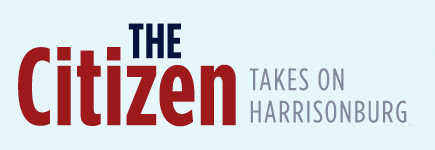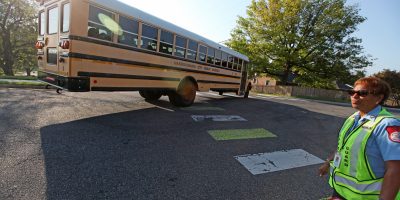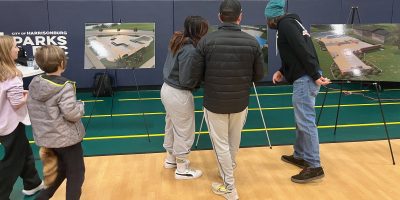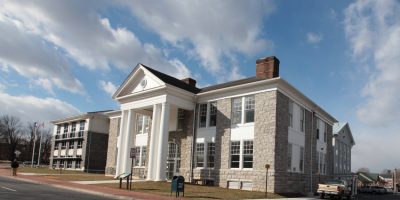By Logan Roddy, senior contributor
While the Harrisonburg City Council plans to collect community input before finalizing how to spend $23.8 million in federal recovery funds, council members on Tuesday pointed to specific projects they’d like to see at the top of the list, including a year-round low-barrier homeless shelter, a new fire station and infrastructure improvements in the Northeast Neighborhood.
Mayor Deanna Reed said during Tuesday’s work session that council members won’t make any decisions without the community’s input, but community forums won’t start until early in 2022.
And while they have several years to allocate and spend the $23.8 million that Harrisonburg will receive in American Rescue Plan Act funds, they don’t want to draw out the process for too long.
The council also highlighted the need for improvements to the Northeast Neighborhood during the Nov. 16 work session focused on spending the ARPA funds.
“It’s important that we correct some wrongs and do some healing,” Reed said of making those improvements. “I think that it is a missed opportunity if this council does not do that. We know that neighborhood has been overlooked, and I believe it’s our obligation that we do that.”
One such project would be installing a Splash Pad at Ralph Sampson Park, which Reed noted has been in the park’s comprehensive plan since 2008. She also said it would be a significant addition to the neighborhood since the Harris Swimming Pool was removed, which was located where Roberta Webb Childcare Center is now.
“And it was taken away from us when the Westover pool was built,” Reed said. “That is a hurt that has been a part of our community that has never healed.”
Council member Chris Jones said the north end of downtown also could use improvements, especially when compared to the central downtown area.
“Everything is brighter, and more manicured. It’s like a completely different place,” Jones said. “And then if you’re walking north, you’ll instantly see the differences in the sidewalks, and the streets, and everything.”
Fire station and public works
Jones also said he’d like to see the construction of a fifth fire station — and one that would serve the Park View area near EMU’s campus, where response times are currently the highest in the city. He said past councils have wanted to do that and without ARPA, the city would have to borrow money to build the station, which staff estimated could cost $4.9 million.
Jones said it’s been necessary since the city annexed that area in 1983.
“It will lower the response time overall, it will help with home insurances, and quite honestly we just have a large amount of small children going to school there. We’ve got a college there. And also you’ve got a large retirement center there,” Jones said.
The city staff also recommended a new Public Works administrative building to meet the department’s growing needs. The current building is also located in a flood zone, making options for renovating limited. It would cost $6.4 million to construct a new 22,500 sq. ft. building where the staff parking lot is.
However, council members balked at the cost, and Reed said both the public works building and new fire station would use up nearly half of the funds.
Jones suggested they explore some other options to help the department.
“We’re gonna lean on public works to provide so many services for us, so I think it’s very important that we figure out a way to make sure that they are propped up and have the longevity that they need to provide all the other services that we lean on them for,” Jones said.
Community engagement
To get community input about urgent needs that could be addressed, the council decided that the first engagement meeting would be held in the Northeast Neighborhood in early 2022. Reed said she wants residents as well as representatives from nonprofits, churches and all relevant groups of the neighborhood to be involved.
The city will work with the Chamber of Commerce as well as JMU’s Institute for Constructive Advocacy and Dialogue, who have expressed interest in speaking with council members individually to get a fuller picture of what they should look like. Jones also suggested that they organize future engagement meetings by Harrisonburg’s eight voting precincts to help group the neighborhoods together.
Vice Mayor Sal Romero said while they’ve identified some good priorities, what’s most important is what’ll come from community discussion.
“We have to really be thinking about ‘where do we make the biggest impact with the funds?’” Romero said.
He also asked to be directly involved in advertising the meetings and inviting people to ensure the greatest level of accessibility and participation.
“I just would hate for us to miss this opportunity to really be able to hear from everyone, at least a segment of each of those who represent our city,” Romero said. “A lot of the reasons people don’t come is because they don’t feel comfortable.”
He also said that they need to work to address barriers like language by using interpreters and that these types of meetings might be unfamiliar to people, so promoting an understanding of the expectations is key.
Jones said they also need to provide more information to the public about each of the proposed programs because the view from council is different from residents. He suggested doing a deeper dive into projects like the fire station and improving childcare services over the next month to guide the conversations when it comes time for community engagement.
City spokesman Mike Parks said city staff is beginning the process to start hiring an ARPA grant coordinator, including drafting the position description, identifying a salary and drafting a future of the role once the grant funds are spent in 2026. The council gave the go-ahead at its Nov. 16 work session to start that process to hire for the job, which the federal government recommended communities do to apply for and manage grant money.
Updated 8:56 a.m. to reflect that the city staff will begin the process of hiring an ARPA grant coordinator.
Journalism is changing, and that’s why The Citizen is here. We’re independent. We’re local. We pay our contributors, and the money you give goes directly to the reporting. No overhead. No printing costs. Just facts, stories and context. We’re also a proud member of the Virginia Press Association. Thanks for your support.











